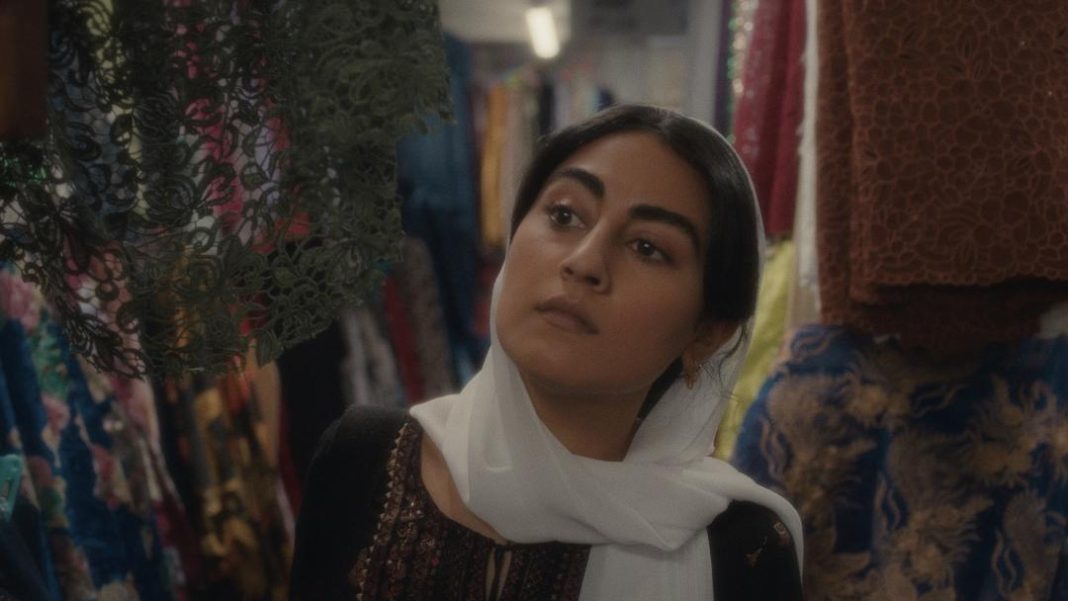Elham Ehsas reflects on the plight of a young Afghan girl in the short film YELLOW, which is timely. given the conflicts currently headlining the news.
Film And TV Now spoke with the film-maker about the short.
There is still a potency and urgency about this short, given the ongoing situation in Afghanistan. What was the start-off point for the short?
Schools and Universities for women have been closed since the fall of Kabul to the Taliban. Women have had no access to any education for the last two years and this has always disturbed me and I wanted to use my art in a way to stand up for the women of my country.
I also knew that because this is such an incredibly broad and powerful topic, I couldn’t tackle it head-on, especially in a short film so I decided to use a small moment in the plight of an Afghan woman to try and encapsulate the ongoing struggle of being a woman in Afghanistan.
I wanted to capture the emotions and struggles of a young Afghan girl as she embarks on a journey to purchase her first Chadari, a symbol of the restrictive dress code imposed by the Taliban. The film aims to reflect the resilience, courage, and determination of Afghan women who persist in asserting their agency and finding moments of personal freedom despite oppressive circumstances.
You fled the Taliban and came to the UK when you were ten. How much of a cultural change was that for you?
I remember arriving in London with just three words of English. Yes, No and Coca Cola.
But it was exciting because everything was new to me from the escalators to a Big Mac. I’d never tasted a McDonald’s cheeseburger before and I’d never had a teacher who couldn’t speak my language.
It definitely was a struggle during the first five or so years when I was trying to find myself and who I am in this new society, not to mention learning new social norms and a completely alien language. But it was an incredible experience that I still carry with me and in my work, I am a child of two continents.
Born in the East but raised in the West and juggling those two worlds has given me a whole new perspective on life and the cultures that I orbit around. And you’d be surprised how similar both cultures can be, even in their monumental differences. In the end, we are all human.
Tell us about your cast.
My lead actress is Afsaneh Dehrouyeh who I have been lucky enough to work with in my first short film Our Kind Of Love, and since then she has always been in my mind for future projects.
Afsaneh brings a certain gentle beauty to all the characters that I have written for her and has always elevated my films with her performance so I’m forever grateful that she always embraces my projects with so much enthusiasm and helps me bring characters to life that are first born on a page, which she imbues with life and soul and rhythm.
Tell us about your production team.
I usually collaborate with the same team I have worked with previously and have been lucky enough to have a good set of people around me. My composer Darryll Hanan was incredible in bringing the themes of the film to life through music.
My costume designer Jessica was an absolute dream throughout. I have worked with my DOP Yiannis Manolopoulos on previous projects so we already have experience working with each other and we speak each other’s language.
It really does help to have a director of photography who has the exact same taste in films, framing and aesthetics as you. Shooting Yellow together was a step up for both of us because we were telling a very ambitious story with very little money and watching Yiannis work on set and make Yellow look the way it does with a quarter of the budget it should have had, was truly a feat and I am very proud of him. And it has also made our working relationship stronger.
Where did you shoot and for how long?
Yellow was shot between Afghanistan and London. Our interior scenes inside the shop were all shot in Hackney and it was a one-day shoot. The exteriors that you see in the film of Afghanistan were really shot in Kabul to give you a sense of the actual richness of the country.
Who and what are your key cinematic influences?
I love storytellers who tell a lot with very little both in terms of dialogue, camera movement and cuts. Give me a 6 minute scene where the camera doesn’t move and there are no cuts and I will eat it up.
I love that the frame is left open to the audience to explore and look around without unnecessary cuts and camera movements which also helps the actors inhabit the space and give them room.
In terms of influences, I am a big fan of Roy Andersson and his films. I remember watching A Pigeon Sat on a Branch Reflecting on Existence and completely being floored by it. It was like nothing I had ever seen before. My favourite film ever made has to be The Band’s Visit by Eran Kolirin – an achingly beautiful story told with the simplest of premises.
Would you like to expand on the issues and themes explored in this short into a feature idea?
I am always orbiting around stories from my country Afghanistan so even the feature, whatever form it may take, will be around an Afghan story with Afghan characters.
Part of the reason for getting into filmmaking and telling my own stories is to counter the popular Hollywood and Western narrative of Afghanistan being a land of terrorists and savagery and whatnot – I want to change all of that with my stories and celebrate a land that was settled around 7000 BC and has been in transition ever since.
It is a land rich with stories and I’d like to explore that and share it with a Western audience.
You are inspired by stories based on your home country of Afghanistan. What fascinates you about the country, given its recent conflicts and troubles?
With its rich history of regime changes, Afghanistan stands as one of the world’s most inherently diverse countries. From the rise of the Hotak Dynasty in 1709 to the recent restoration of Afghanistan as an Islamic Emirate in 2021, making it as old as 313 years and as young as 24 months old, depending on how you look at it.
It has been a crossroads of different civilizations, empires, and trade routes throughout history. The land is known for its breath-taking landscapes, including majestic mountains, ancient ruins, and vibrant bazaars.
Despite the challenges Afghanistan has faced, its’ people have displayed incredible resilience and determination. There are countless stories of courage, survival, and the enduring spirit of its’ population. The struggles and triumph of Afghan communities have captured the attention and empathy of people worldwide.
Your new short film YOUR HAND FOUND MINE premiered at the House of Lords. What was the experience like screening it for Parliamentary figures and are there plans to show YELLOW to politicians in this and other countries?
It was really incredible having our little film open the doors of Parliament for us and being able to screen it in front of MPs and Lords alike, actual people who can make a real impact on policy.
It would be a dream to show Yellow to politicians because they are the ones who can make a real meaningful impact to the lives of Afghan women living in Afghanistan. Politicians around the world need to work harder to engage the Taliban regime and open a dialogue with them about women’s rights in Afghanistan.
What issues and themes are you keen to explore in future work?
I want to use my art and my writing more to help address causes I care about and believe in.
I know that Afghan stories will remain a big part of my professional work but I also want to start engaging in stories about the environment and the climate crisis we are all facing. Having said that, I do hope to stretch my muscles and make all sorts of films in the future.
I don’t want to be bound by a certain theme or topic as long as the story touches an audience, and as long as I believe in it, I’ll try my best to make it a cinematic experience and in doing so, learn something new from it.
How has the festival circuit helped your film?
The festival circuit has been great in helping my film gain momentum and although laurels don’t mean very much at the end of the day, it still adds a certain validity to your story and your film which in turn helps convince people to commit 12 or 15 minutes of their day to watch it.
Yellow will make its North American premiere at the Palm Springs International Film Festival which I hope will give it even more momentum on the world stage and attract attention to the plight of girls and women in Afghanistan.
Finally, what are you most proud of about this short?
I’m proud of all my friends and collaborators who came together with me to help make a film in the name of Afghan girls and women, who need us now more than ever. We must not forget about them.
Please follow and like us:


































